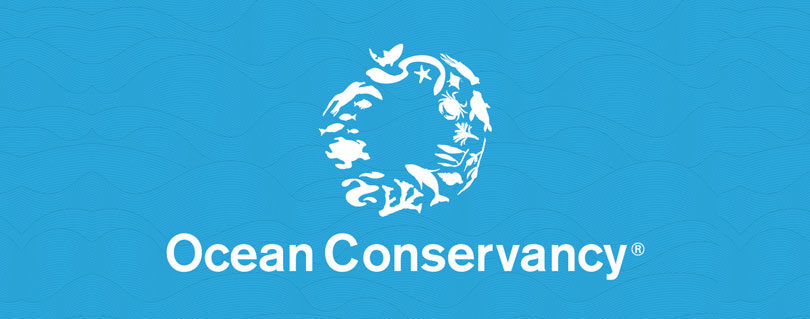Five Ways Our Ocean Contributes to Freshwater Access, Or Lack Thereof
Published by Ocean Conservancy
Access to clean water was one of the primary reasons why I became an environmentalist. During my senior year of high school, I learned about inequitable access to safe drinking water. Still, it was not until learning of the water crisis in Flint a few years ago that access to safe water has become something I think about every time I open a faucet to get water. I spent this past summer in Flint, co-leading a youth water testing and education program. Through my experience in Flint, I learned about the different structural barriers and problems that create inequitable access to safe water.
Many of us take water for granted. We don’t think too much about where our water comes from, whether water will come out when we open the faucet or whether the water we consume is safe. Yet, there are billions living without clean, safe drinking water, and this is not limited to people in other countries. Today, there are communities in the United States who don’t have access to freshwater, including rural communities in Appalachia and California, Navajo Nation families in the Southwest, and residents in Flint and Detroit.
This year the focus for World Water Day is addressing the reasons why people don’t have access to safe water for drinking, bathing, farming and other uses. While we cannot use saltwater from the ocean, the ocean still plays a huge role in the water cycle and ultimately, in our access to freshwater. Here are five ways our ocean contributes to freshwater access, or lack thereof:
1. Increased pumping of groundwater can cause saltwater intrusion, where saltwater flows into these freshwater aquifers
Saltwater intrusion is a major concern for coastal aquifers. A common source of drinking water for more than one billion people living in coastal regions is pumped groundwater. Under natural conditions, freshwater flows seaward via streams and rivers above ground as well as underground aquifers. There is some mixing near the coast, however, over-pumping of groundwater can reduce freshwater flow toward the coasts and cause saltwater to infiltrate the freshwater zones of the aquifer, making it unsafe for human consumption.
2. Sea level rise also contributes to saltwater intrusion
As sea level rises, this may increase saltwater intrusion in coastal aquifers, and reduce the availability of freshwater for people living in coastal regions. Sea level rise also affects surface water sources of drinking water because as sea levels rise, the salt front (where freshwater meets saltwater) may progress further upstream. Saltwater intrusion could lead to the relocation of water intakes, development of alternative sources of freshwaters and increased treatment costs.
3. Desalination plants are used to address freshwater shortages through reverse osmosis, but this can be hindered by biofouling, which is increased by ocean warming
Where challenges to freshwater access are increasing, desalination has been a solution for some. However, biofouling (the buildup of algae and bacteria on the filtration membranes of desalination plants) impacts the efficiency and sustainability of the treatment process. Additionally, ocean warming and ocean acidification due to carbon emissions in the atmosphere are both factors that affect biofouling development. Biofilm growth is faster at higher water temperatures, and ocean acidification alters the makeup of biofouling communities, making it harder for some to grow and encouraging others to grow more. Therefore, these ocean changes will need to be taken into consideration when developing ways to address the biofouling problem in desalination plants.
4. Warmer ocean waters alter precipitation and storm patterns
Warmer waters contribute to increased rainfall. Increased rainfall may result in more frequent and more intense flooding events, which could disrupt water infrastructure. One study has shown that increased temperatures in the Atlantic Ocean have been primarily responsible for the increasing rainfall in the Amazon rainforest. The Amazon provides about 20 percent of the world’s freshwater through the hydrological/water cycle, the process of evaporation and precipitation. Ocean warming also fuels hurricanes which can also lead to disruptions in water and sanitation infrastructure for communities.
5. Lastly, the ocean is part of the water cycle, which is how we get fresh water
Evaporated ocean water will eventually fall back to land as freshwater via precipitation. As I mentioned earlier, changes in the ocean due to carbon dioxide emissions, specifically—ocean acidification, ocean warming, and sea level rise as a result of ocean warming and melting of land-based ice—impact the water cycle by altering rainfall, flooding and storm events. Impacts on the water cycle have the potential to affect our access to safe water.
Water is life. On this World Water Day, we are exploring the linkages between access to safe water as well as healthy ocean waters.
Sign up for our emails!
The post Five Ways Our Ocean Contributes to Freshwater Access, Or Lack Thereof appeared first on Ocean Conservancy.
Read the full article at: https://oceanconservancy.org/blog/2019/03/22/five-ways-ocean-contributes-freshwater-access-lack-thereof/



